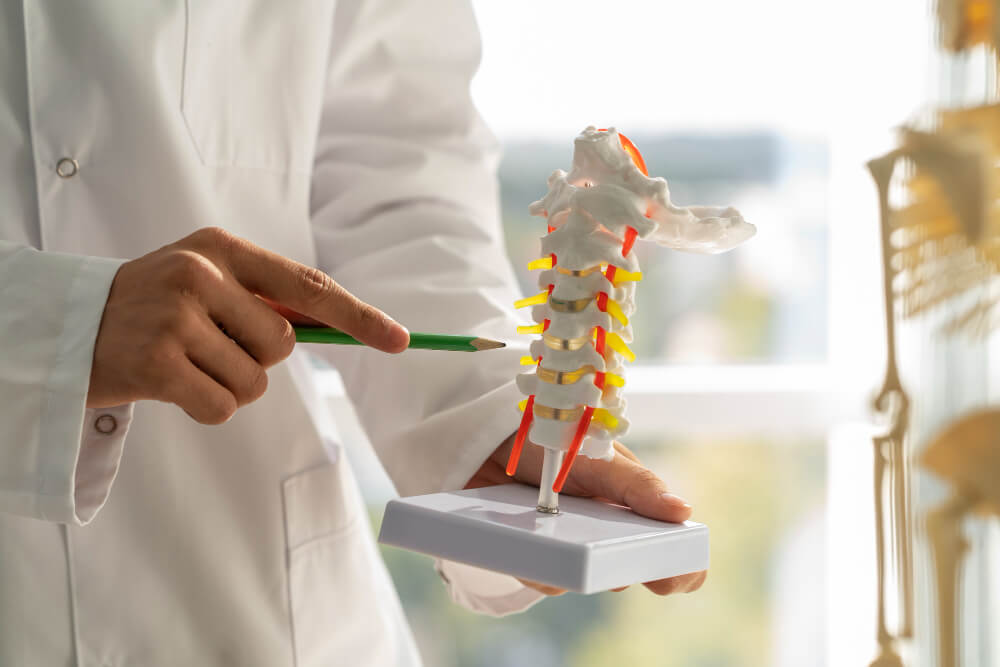Don’t Ignore the Ache: Understanding and Treating Spinal Fractures with a Spine Doctor
Spinal fractures, breaks in one or more vertebrae (the bones of the spine), are a medical emergency. While back pain is a frequent experience, spinal fractures are less common but require immediate medical attention. A fractured vertebra can damage surrounding nerves and tissues, leading to pain, numbness, and even paralysis. Early diagnosis and treatment by a spine doctor are crucial for preventing complications and promoting a full recovery.

What Causes Spinal Fractures?
Spinal fractures can occur due to various factors:
Trauma:
- Falls: Falls from heights, particularly falls onto the back, are a leading cause of spinal fractures. The elderly and individuals with weakened bones are at higher risk.
- Motor vehicle accidents: Car accidents, motorcycle crashes, and bicycle accidents can cause significant trauma to the spine, leading to fractures.
- Sports injuries: High-impact sports like football, rugby, and gymnastics carry a risk of spinal fractures.
- Violence: Violence or blunt force trauma can also cause spinal fractures.
Osteoporosis:
Osteoporosis, a condition that weakens bones, increases the risk of spinal fractures even from minor falls or bumps.
Cancer:
Cancerous tumors in the spine can weaken the vertebrae, making them more susceptible to fracture.
Congenital Conditions:
Certain birth defects can affect the development of the spine, increasing the risk of fractures.
Symptoms of Spinal Fractures

The symptoms of a spinal fracture can vary depending on the location and severity of the break. Here are some common warning signs:
- Sudden, severe back pain: This is the most frequent symptom, often described as a sharp, stabbing pain or a feeling of being crushed.
- Pain that worsens with movement: The pain may intensify when changing positions, coughing, or sneezing.
- Loss of sensation or numbness: Fractures can compress nerves, causing numbness, tingling, or weakness in the legs or arms.
- Difficulty moving or walking: Spinal fractures can affect mobility and coordination.
- Loss of bladder or bowel control: In severe cases, spinal fractures may damage nerves controlling bladder and bowel function.
- Deformity or swelling in the back: A noticeable change in the spine’s curvature or swelling near the site of the fracture may occur.
Importance of Immediate Medical Attention
If you experience any of the symptoms listed above, particularly after a fall or trauma, it’s crucial to seek immediate medical attention. Delaying treatment can worsen the injury and increase the risk of complications like permanent nerve damage or paralysis.
Diagnosis of Spinal Fractures
A spine doctor will conduct a thorough evaluation to diagnose a spinal fracture. This typically involves:
- Physical examination: The doctor will assess your back for tenderness, swelling, and range of motion. They may also test your reflexes and muscle strength.
- Medical history: Discussing your symptoms, any history of falls or injuries, and medical conditions is crucial.
- Imaging tests: X-rays, CT scans, or MRIs are typically used to visualize the spine and confirm the location and severity of the fracture.
Treatment of Spinal Fractures
Treatment for spinal fractures depends on the severity and location of the break. Here are some common treatment approaches:
Immobilization:
In many cases, the spine needs to be immobilized to prevent further injury and allow for healing. This may involve wearing a brace, cast, or halo vest, depending on the severity of the fracture.
Medication:
Pain medication can help manage pain associated with the fracture. Muscle relaxants may also be prescribed to reduce muscle spasms.
Surgery:
In some cases, surgery may be necessary to stabilize the fracture, realign the vertebrae, or remove fragments of bone that are compressing nerves. Minimally invasive surgical techniques are often preferred when possible.
